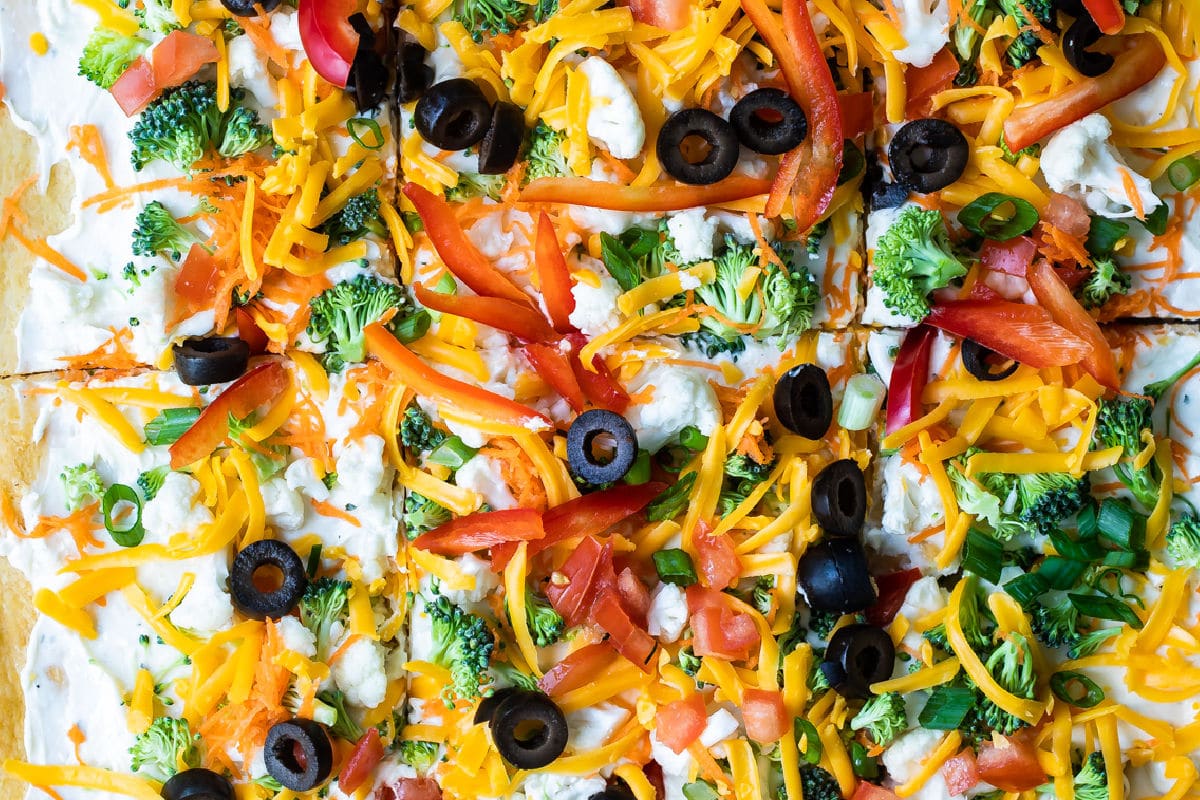Transform your next movie night into a culinary adventure with these delicious vegetarian pizza recipes! From crafting the perfect dough – whether you prefer a yeasty rise, tangy sourdough, or a quick-fix method – to creating vibrant, flavorful sauces and selecting the ultimate topping combinations, we’ll guide you through every step. Get ready to impress your friends and family with pizzas that are as captivating as your favorite film.
This guide explores a world of vegetarian pizza possibilities, offering three distinct dough recipes, three unique sauce options (marinara, pesto, and roasted red pepper), and a wealth of topping suggestions, complete with nutritional information. We’ll cover everything from achieving that perfect crispy crust to keeping your pizza warm throughout the movie, ensuring a truly unforgettable cinematic feast.
Popular Vegetarian Pizza Toppings

Choosing the right toppings can elevate a vegetarian pizza from ordinary to extraordinary. The perfect combination depends on personal preference, but some toppings consistently reign supreme for their flavor, texture, and versatility. This section explores five of the most popular vegetarian pizza toppings, examining their nutritional value and culinary applications beyond the pizza pie.
Five Popular Vegetarian Pizza Toppings
The following list details five incredibly popular vegetarian pizza toppings, focusing on their unique qualities and contributions to the overall pizza experience. Each offers a distinct flavor profile and textural element, contributing to a well-rounded and satisfying pizza.
- Mushrooms: Earthy and umami-rich, mushrooms offer a meaty texture that satisfies savory cravings. Their subtle sweetness complements a variety of cheeses and sauces. The variety of mushroom types, from cremini to shiitake, adds textural and flavor complexity.
- Onions: Whether caramelized for sweetness or used raw for a sharp bite, onions provide a pungent and savory counterpoint to richer toppings. Their versatility allows them to blend seamlessly into various pizza styles.
- Bell Peppers: Crisp and vibrant, bell peppers contribute a delightful sweetness and crunch. Their bright colors add visual appeal, while their varied hues—red, yellow, orange, green—offer subtle differences in flavor intensity.
- Spinach: Tender and slightly bitter, spinach adds a fresh, healthy element to the pizza. Its mild flavor allows it to complement other toppings without overpowering them. Its slight wilting during baking gives a pleasant textural contrast.
- Black Olives: Salty and briny, black olives provide a strong, distinctive flavor that adds depth and complexity. Their firm texture holds up well during baking, offering a pleasing contrast to softer toppings.
Nutritional Comparison of Toppings
Understanding the nutritional value of your toppings allows for informed choices and balanced meals. The following table provides a comparison of the nutritional content of the five highlighted toppings, using approximate values per 100g serving. Note that these values can vary depending on the specific type and preparation method.
| Topping | Calories (approx.) | Protein (approx. g) | Vitamins (examples) |
|---|---|---|---|
| Mushrooms | 22 | 3 | B vitamins, Vitamin D |
| Onions | 40 | 1 | Vitamin C, folate |
| Bell Peppers | 30 | 1 | Vitamin C, Vitamin A |
| Spinach | 23 | 3 | Vitamin K, Vitamin A, Iron |
| Black Olives | 115 | 1 | Vitamin E |
Culinary Versatility of Toppings
The appeal of these toppings extends far beyond the pizza. Their diverse flavors and textures lend themselves to a wide range of culinary applications.
- Mushrooms: Excellent in pasta dishes, soups, stir-fries, and as a standalone side dish sautéed with garlic and herbs.
- Onions: A staple in countless dishes, from French onion soup to savory chutneys and flavorful accompaniments to grilled meats.
- Bell Peppers: Add vibrant color and sweetness to salads, fajitas, stuffed peppers, and countless other dishes.
- Spinach: A versatile leafy green that can be added to salads, smoothies, omelets, and pasta dishes.
- Black Olives: A classic ingredient in Mediterranean cuisine, they are delicious in tapenades, salads, and as a garnish for various dishes.
Vegetarian Pizza Dough Recipes
Crafting the perfect pizza dough is the cornerstone of a truly memorable vegetarian pizza experience. The right dough provides the ideal base, offering a delightful chewiness and subtly crisp edges that complement the vibrant toppings. The three recipes below showcase different approaches, each resulting in a unique texture and flavor profile. Experiment to find your favorite!
Yeast-Based Pizza Dough
This classic method yields a wonderfully airy and flavorful dough, perfect for showcasing the rich tastes of your vegetarian toppings. The slow fermentation allows for the development of complex flavors.
- In a large bowl, combine 1 cup warm water (105-115°F), 1 teaspoon sugar, and 2 teaspoons active dry yeast. Let stand for 5-10 minutes until foamy.
- Add 2 tablespoons olive oil, 1 teaspoon salt, and 3 cups all-purpose flour. Stir until a shaggy dough forms.
- Turn the dough out onto a lightly floured surface and knead for 5-7 minutes, until smooth and elastic. Imagine the dough stretching and yielding under your hands, becoming increasingly pliable and smooth.
- Place the dough in a lightly oiled bowl, turning to coat. Cover with plastic wrap and let rise in a warm place for 1-1.5 hours, or until doubled in size. Picture the dough gently puffing up, expanding to almost twice its original volume.
- Punch down the dough and proceed with your pizza-making process.
Tips for achieving the perfect texture: Ensure the yeast is fresh and the water is the correct temperature. Proper kneading develops gluten, resulting in a chewy crust. Avoid over-kneading, which can lead to a tough dough.
Sourdough Pizza Dough
This recipe utilizes a sourdough starter, imparting a tangy, complex flavor to the dough. The long fermentation process contributes to a unique depth of taste.
- In a large bowl, combine 1 cup sourdough starter (fed 4-6 hours prior), 1 cup warm water, and 1 teaspoon salt.
- Gradually add 3-3.5 cups all-purpose flour, mixing until a shaggy dough forms. The dough will be quite sticky initially.
- Turn the dough out onto a lightly floured surface and knead for 5-7 minutes, until slightly less sticky but still quite soft and extensible. Imagine the dough resisting your touch initially, then gradually yielding to your kneading.
- Place the dough in a lightly oiled bowl, cover, and let rise at room temperature for 4-6 hours, or until almost doubled. Picture the dough slowly rising, its surface subtly changing as it gains volume.
- Refrigerate the dough for 12-24 hours to further develop flavor. This cold fermentation allows for a slower, more nuanced flavor development.
- Remove from the refrigerator 1-2 hours before using.
Tips for achieving the perfect texture: The hydration level of the dough is crucial. A slightly wetter dough will yield a more open crumb. The long fermentation allows for the development of complex flavors and a slightly tangy taste.
Quick-Rise Pizza Dough
This recipe is perfect for those short on time. Baking powder provides the lift, resulting in a tender and slightly airy crust.
- In a large bowl, combine 1 ½ cups all-purpose flour, 1 teaspoon baking powder, ½ teaspoon salt, and 1 tablespoon olive oil.
- Gradually add ¾ cup warm water, mixing until a soft dough forms. The dough will be softer and less elastic than the yeast-based dough.
- Turn the dough out onto a lightly floured surface and knead for 2-3 minutes, until smooth. The kneading time is significantly shorter than the other recipes.
- Let the dough rest for 10-15 minutes before using. This short rest allows the gluten to relax and the dough to become more manageable.
Tips for achieving the perfect texture: Avoid over-kneading, as this can lead to a tough crust. The dough will be softer and less elastic than the other recipes, reflecting its quick-rise nature.
Comparison of Dough Recipes
The yeast-based dough offers the most classic pizza flavor and texture, with a delightful chewiness and airy crumb. The sourdough dough provides a more complex, tangy flavor and a slightly more open crumb, but requires more time. The quick-rise dough is the most convenient option, perfect for weeknight pizzas, though it lacks the depth of flavor of the other two. Each dough offers a unique experience, catering to different preferences and time constraints.
Step-by-Step Guide to Making Vegetarian Pizza
Crafting a delicious vegetarian pizza is a rewarding culinary experience, bringing together the artistry of pizza making with the vibrant flavors of fresh vegetables. This guide provides a clear, step-by-step approach to creating a pizza that’s both visually appealing and incredibly tasty. From preparing the dough to achieving that perfect crust, we’ll cover every stage of the process.
Making pizza dough from scratch allows for greater control over the ingredients and texture, resulting in a superior pizza experience. However, store-bought dough provides a convenient alternative for those short on time.
Dough Preparation
Whether using homemade or store-bought dough, proper handling is crucial. Homemade dough requires time to rise, ensuring a light and airy texture. Store-bought dough needs to be gently handled to prevent tearing. The texture of the dough should be soft and pliable, yet firm enough to be easily stretched and shaped.
- If making your own dough, follow your chosen recipe carefully, ensuring the yeast is activated properly and the dough rises sufficiently. A properly risen dough will be almost double its original size.
- If using store-bought dough, allow it to come to room temperature before handling. This makes it more pliable and easier to stretch.
- Lightly flour your work surface to prevent sticking. Gently stretch the dough into your desired shape and thickness, aiming for a slightly thinner crust at the edges than in the center.
Sauce and Topping Application
The sauce and toppings are where the creativity truly shines. Using high-quality ingredients, a balanced distribution of toppings, and a thoughtful layering technique will create a pizza that’s both delicious and visually stunning. Avoid overloading the pizza with toppings, as this can lead to a soggy crust.
- Spread a thin layer of your chosen tomato or pesto base evenly across the dough, leaving a small border for the crust.
- Arrange your vegetarian toppings strategically. Consider color and texture contrast for visual appeal. Begin with larger, heavier toppings like roasted vegetables, followed by smaller items such as mushrooms and olives.
- Grate cheese evenly over the toppings. Different cheeses offer varying textures and melt properties; a blend can enhance the overall flavor profile.
Baking and Serving
Baking the pizza requires attention to detail to ensure a perfectly cooked crust and melted cheese. Oven temperature and baking time are crucial factors influencing the final product. Using a pizza stone can significantly improve the crust’s texture and crispness.
- Preheat your oven to a high temperature (around 450-500°F or 232-260°C), preferably with a pizza stone inside for at least 30 minutes. A hot oven is essential for achieving a crispy crust.
- Carefully transfer the pizza onto the preheated pizza stone or baking sheet. Bake for 12-15 minutes, or until the crust is golden brown and the cheese is melted and bubbly. Keep an eye on the pizza to prevent burning.
- Remove the pizza from the oven and let it cool slightly before slicing and serving. This allows the cheese to set and prevents it from becoming too runny.
Common Mistakes and Troubleshooting
Several common pitfalls can affect the final result. Understanding these issues and their solutions allows for a more consistent and successful pizza-making experience.
- Soggy Crust: This is often caused by too much sauce or toppings, or insufficient baking time. Use less sauce, distribute toppings evenly, and ensure the oven is hot enough.
- Burnt Crust: This can result from too high an oven temperature or too long a baking time. Monitor the pizza closely and adjust the temperature or baking time as needed.
- Unevenly Cooked Pizza: This can occur if the oven temperature is inconsistent. Rotate the pizza halfway through baking to ensure even cooking.
Alternative Cooking Methods
While oven baking is the most common method, alternative cooking techniques can offer unique flavors and textures. Grilling or using a pizza stone enhances the crispness of the crust.
- Grilling: Preheat your grill to medium-high heat. Place the pizza on a grill-safe pizza pan or directly on the grill grates (if using a thin crust). Cook for 3-4 minutes per side, or until the crust is cooked and the cheese is melted.
- Pizza Stone: Using a pizza stone in the oven helps create a crispier crust by retaining heat and promoting even baking. Preheat the stone thoroughly before placing the pizza on it.
With a variety of doughs, sauces, and toppings at your fingertips, the possibilities for your movie night pizza are endless. Whether you’re a seasoned pizzaiolo or a complete beginner, this guide empowers you to create a personalized pizza masterpiece that perfectly complements your chosen film. So, gather your ingredients, preheat your oven, and get ready to experience the ultimate combination of cinematic enjoyment and delicious, homemade vegetarian pizza.
FAQ Compilation
Can I make the pizza dough ahead of time?
Yes! All three dough recipes can be made a day or two in advance and stored in the refrigerator. Just allow for extra rising time before shaping and baking.
What are some good vegetarian cheese alternatives?
Vegan mozzarella shreds, crumbled feta, ricotta, or a blend of your favorite cheeses work wonderfully. Experiment to find your perfect combination!
How can I prevent a soggy pizza crust?
Pre-bake your crust for 5-7 minutes before adding toppings to prevent sogginess. Also, ensure your sauce isn’t too watery.
What’s the best way to reheat leftover pizza?
Reheating in a skillet on low heat with a little water added often yields the best results, restoring some of the crust’s crispness.


